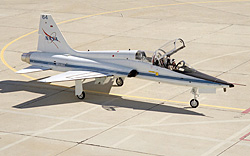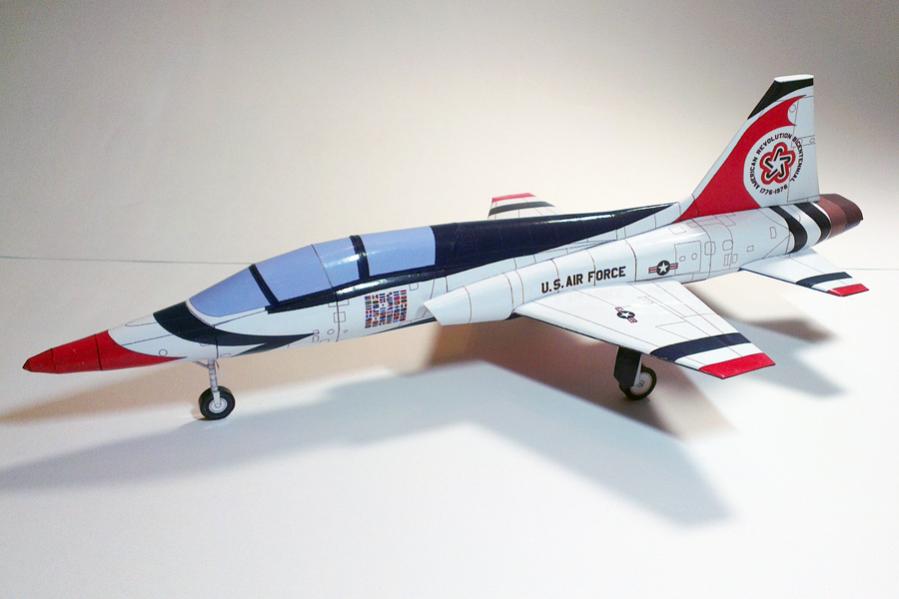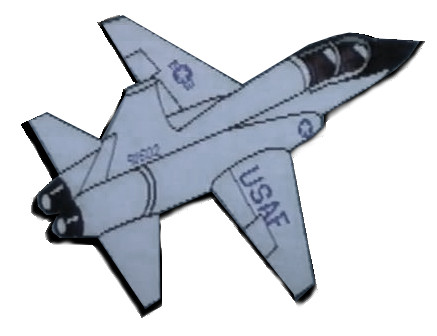





Northrop-T-38
 NASA Dryden's T-38 Flying over Southern California
NASA Dryden's T-38 Flying over Southern California|
Imagine sitting at the controls of an airplane that is not only more than twice your age but could potentially have been piloted by one of your grandparents, and possibly will be flown by your children. No, I'm not talking about a Barn Storming Jenny. Now imagine being 21 years old, sitting at the controls of a sleek, high powered aircraft that is capable of greater than mach speed. What if I told you that both scenarios were possible simultaneously, would you believe me? Ladies and gentlemen, the past, present and future of supersonic aviation training has been at hand for more than half a century, and will continue for at least 30 more. March 1959 the first T-38 Talon took to the sky. Although Northrop was looking at creating an affordable, light combat aircraft, when it was demonstrated for the Air Force, they had other ideas in mind and looked at it as a possible replacement trainer for the T-33 Shooting Star which was rapidly being outpaced by more advanced jets entering into service. Thus in 1961, the Northrop T-38 Talon entered into the U.S. Air Force service and became the world's first supersonic jet trainer. As of 2013, and after more than 50 years of service, the T-38 is still being used by the U.S. Air Force, Navy, NASA, and a few select countries. With nearly 1200 jets built during that 50 year span, more than half are still in military service, and have been used to train more than 60,000 USAF pilots. In the 1950's, Northrop wanted to create an affordable, light weight aircraft. The N-102 Fang was their first attempt, which was cancelled shortly after it was started due to increasing weight and costs, but like from the ashes of the phoenix the N-156 rose from the ruin of N-102 program, and from it sprang forth the F-5 Freedom Fighter family. The Freedom Fighter Family included the F-5 Freedom Fighter/Tiger II, a single seat fighter, which has seen service in several countries around the world, and been used in movies with various paint schemes, the most recognizable of which is the fight scenes from the movie "Top Gun" in which the F-5 was used to portray the mythical MiG-28. The T-38 was the two seat fighter that grew from this program, and the last aircraft to wrap up the program utilizing all of the lessons learned and the latest technology was F-20 Tigershark II. Which, despite showing great promise, was not well received and only 3 were built.
NASA 
NASA has 32 T-38s aircraft in their inventory. Flying primarily out of Ellington Field, TX, they serve NASA primarily in pilot proficiency and training for astronauts, and have been used in this role since the mid-1960s. Previously the aircraft supported the Space Shuttle program acting as chase planes and keeping watch while escorting Shuttles gliding to a landing. The T-38s were further used as platforms for photographic and video imaging for the Shuttle program. The T-38s are preferred over the faster F-18 counterparts because of the lower maintenance/operating requirements; and the fact that in these lean times, the T-38 is much more fuel efficient. Presently NASA spends between $25-30 million annually, and predicts that they will reduce their fleet to 16 aircraft by 2015. Question: What will replace the T-38, and when? I don't know the answer to that question, and with an extended airframe/power plant life time extended to 2040 and a fleet of over 500 aircraft, the Air Force doesn't seem to be in any hurry to replace its current trainer either. At its current lifecycle, the youngest T-38 not only will have been eligible to be a member of AARP for more than 10 years, but it would be eligible to collect Social Security as well (if it still exists by that time). |
The Model - Aaron has somehow managed to capture the beautiful lines of this aircraft and make it possible for us to bring this wonderful aircraft from flat pages to a three dimensional piece of art.
One of Aaron's go to beta testers, Edwin Cho (aka: Papermate), did a fantastic build of the Thunderbird's T-38.




What People Say!
| Cole (age 6) | It looks like the real thing, but minimized. |
| OldGote | That is awesome! Nicely done! |
| Sacked | It's a great-looking model. |
| Poorkitten | That came out great. |
| PrinceRat | Wow, that's a mighty pretty aircraft. |
T-38A Talon
|
General Characteristics Crew: Length: Wingspan: Height: Empty Weight: Loaded Weight: Powerplant: Performance Max Speed: Range: Service Ceiling: Rate of Climb: Thrust/Weight: |
2 (Student/Instructor) 46 ft 4.5 in 25 ft 3 in 12 ft 10.5 in 7,200 lbs 11,800 lbs 2 × GE J85-5A 858 mph (Mach 1.3) 1,140 miles 50,000 ft 33,600 ft/min 0.65 |

|
Here's an old video made in 1974 that shows how the T-38 Talon fits right in with the style of just about any era.
We hope you will have as much fun with this model as we did, Enjoy!
Northrop T-38 Talons Being Swallowed by a Super Guppy
 Article and Video |
A NASA Super Guppy transport plane "swallowed" two NASA T-38 aircraft whole March 18, right out on NASA Dryden Flight Research Center's back ramp. |
Strange news from NASA
|
The SGT Super Guppy Transport, the last of its kind still flying, is based at Ellington Airport in Houston, near NASA's Johnson Space Center. The aircraft was at Dryden to transport the two T-38s that Dryden hasn't flown in several years and are no longer airworthy to El Paso, Texas, where they were cannibalized for parts to keep other Johnson-operated T-38s in El Paso flying. After removing the wings and other usable components, the remaining portions of the airframes were trucked to the Air Force's Aerospace Maintenance and Recovery Center adjacent to Davis-Monthan Air Force Base near Tucson, Ariz., for final disposition. |
 |



